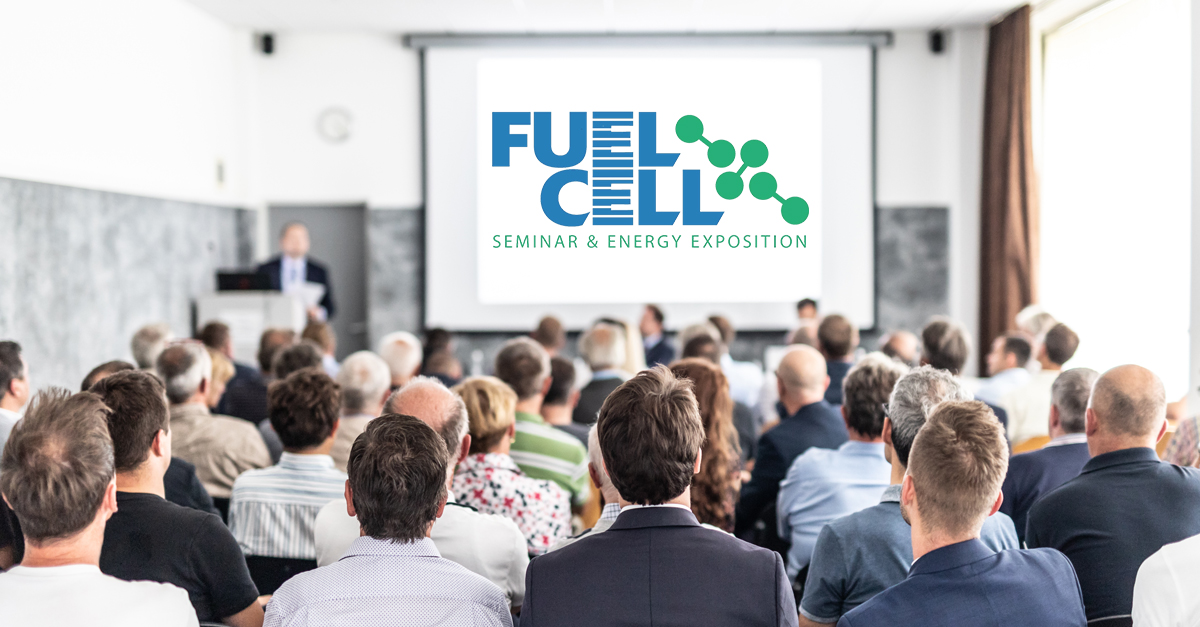This past November, the Fuel Cell Seminar and Energy Exposition (FCS&EE) was back in full swing with a sense of excitement for the state of the industry. The Long Beach Convention Center was an excellent venue for showcasing the uses of fuel cells in some of the most demanding industrial and commercial applications, including several major projects at the San Pedro Bay Ports involving the replacement of diesel equipment with hydrogen fuel cells.
This year, there was a major shift in the tenor of the event, with near-unanimous agreement regarding the viability of fuel cell electric vehicles across the spectrum of classes and uses. Numerous recent strides in the industry allowed participants to focus on how—and not if—fuel cells will become a foundational part of our clean energy future.
With major brands like Toyota and Hyundai showcasing automotive fuel cell applications, these and other light- and heavy-duty mobility demonstrations elicited excitement among participants, sparking conversations about the best options for implementing these solutions on a larger scale. From cost-reduction opportunities and transportation challenges to the possibilities for various electrified applications enabled by fuel cells, the following are key takeaways from the show.

H2@Scale – In recognition of these challenges, the opening afternoon of the conference was dedicated to a H2@Scale Workshop with notable speakers and round-table discussions. Exploring the potential for wide scale hydrogen production and utilization in the U.S., there were in-depth technical exchanges, visions for a transformed future, as well as concerns about funding obstacles for smaller players in the industry.
Emerging Infrastructure – Infrastructure requirements were an underlying theme in almost every presentation. To accommodate so many fuel cell opportunities, it is widely recognized that the current infrastructure will need to mature and expand exponentially. Localized power generation, grid stabilization, and evolving regulations emerged as key developments combining to build hydrogen fueling infrastructure for the coming year.
Roadmap to a Hydrogen Economy – The release of the U.S. Hydrogen Roadmap was a major highlight for many at FCS&EE. This plan is the first such effort undertaken by a consortium of wide-ranging companies and government agencies, with leadership for the effort provided by FCHEA and technical management by McKinsey Corporation. The Roadmap is intended to provide a firm backbone to spur coordinated policy making and financial investment for all levels of government and businesses alike to transform the hydrogen economy in the decades ahead. The release of this report will certainly help to coordinate the efforts and contributions of the corporations, agencies and individuals already active in the industry, in addition to providing opportunities for newcomers, and allow the U.S. to gain traction in putting their collective plans into action.
While a major focus of FCS&EE revolved around shaping policy to enable this critical infrastructure, participants also called for proactive and collaborative efforts across the fuel cell industry as a whole. In particular, show attendees were urged to continually engage policy leaders and decision-makers to help influence future policy requirements. Participants were also challenged to continue spreading the word about the promise of fuel cells and to over-deliver on the promises being made by the organizations they represent.
In organizing FCS&EE, the U.S. Department of Energy and the Fuel Cell and Hydrogen Energy Association have engaged many pioneers and recent entrants in the field, and demonstrates government and industry’s determination to greatly expand fuel cell implementation. The event inspired confidence for the bright future the industry that seems at hand, and we look forward to continue playing an important role in shaping a clean-energy future powered by fuel cells.
